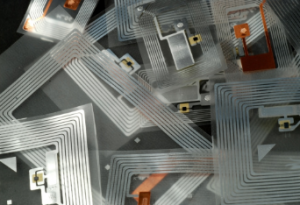RFID retail inventory management is a crucial tool in a retailer’s arsenal, especially for those that deal in high-value or sensitive merchandise. It helps to ensure that products are correctly placed, stolen or mislabeled. In addition, using such a system to track inventory movement can help reduce shrinkage and shrinkage costs and increase sales.
Fixed readers vs mobile readers
Regarding RAMP-RFID RFID retail inventory management, you have two options: fixed and mobile readers. Of course, the choice you make depends on the application you need. However, both can provide many benefits.
Fixed readers are ideal for high-throughput applications. They can work with antennas to scan RFID tags without human intervention. These are commonly used in warehouses, factories, and distribution centres.
 Portable readers are designed to be lightweight and compact. They can connect to management software to help update your inventory system. Many of them also have built-in antennas.
Portable readers are designed to be lightweight and compact. They can connect to management software to help update your inventory system. Many of them also have built-in antennas.
Using RFID technology, you can avoid stockouts and transcription errors. It can increase productivity, and you can share data with your customers. You can also use it to automate your production lines.
Portable RFID readers are used at the point of sale. Their ability to read at a high rate makes them an excellent choice for businesses with a lot of travel.
Mobile readers are typically battery-powered, and they have an integrated antenna. In addition, they can be connected to smart devices via Bluetooth. Most come in the form of a sled. Some models also have an auxiliary port for connecting to other mobile devices.
Both RFID readers are helpful in retail inventory management. However, choosing the best type for your needs can take time and effort.
Fixed readers are usually more powerful than portable readers. It means that you can scan large volumes of RFID-tagged items. A fixed reader can also be installed in a specific location, such as a wall or doorway.
It would be best to use a handheld reader for some applications, such as scanning inside the cargo. They are light, easy to operate, and can be recharged after each use.
Tracking item movement throughout a store
RFID is a new tracking technology that allows retailers to monitor item movement throughout a store. As a result, it improves inventory accuracy and reduces labour hours. It can help improve customer satisfaction.
The most commonly used RFID applications in retail include inventory and supply chain management. However, other use cases are emerging as well.
For example, retailers can use RAMP-RFID RFID retail data to optimise store layouts. It helps ensure that products are placed in suitable locations and can map consumer movements throughout a store.
Another benefit of the system is the ability to reduce shoplifting. For example, an RFID reader can trigger an alarm if someone attempts to leave with an item. Similarly, RFID can track the item if things are dropped off at a different location.
In addition, RFID can be used to track items that are out of stock. By doing so, it can help retailers build a case against shoplifters.
Many retailers are also using RFID to check in shipments. It can reduce out-of-stock situations by more than half. Moreover, it helps to decrease cycle count time.
Retailers can also use RFID to identify items dropped in the wrong bins. They can then reorder these items to prevent a sale of an unneeded product.
Additionally, retailers can use RFID data to track items moved to a specific location in a backroom. It can help employees to locate the item they are looking for more quickly.
Lastly, retailers can use the RFID system to create a more seamless experience for omnichannel shoppers. For example, this can allow customers to pick up online orders and return them in-store.
Despite its early stage, RFID is critical to a retailer’s success. As the technology continues to evolve, it will help support the entire digital transformation of a retailer.
Increase sales
Today’s retailers seek ways to improve their operations and streamline their processes. One way to do that is by integrating RFID technology into their inventory management system. It can boost sales, reduce shrinkage, increase efficiency, and increase the profitability of their business.
Radiofrequency identification (RFID) technology is used in retail inventory management to reduce storage errors and shrinkage. It lets stores track items in real time and allows retailers to see where products are stored and sold. The technology is also helpful in keeping quality information and for remarketing.
RFID is a promising technology that can help reduce stockouts, increase customer satisfaction, and boost revenue. As a result, department stores and specialty apparel retailers are starting to adopt the technology.
The ability to accurately measure the location of an item is key to a retailer’s success. It can be done by putting a tag on merchandise or tracking it through a store’s point of sale (POS) system.
Another critical use case of RFID is in the checkout process. It can eliminate the need for blind receipts and make self-checkout more efficient. By tagging products, retailers can also boost productivity.
Retailers can also use RFID to check in shipments. It allows them to reduce cycle count time and improve accuracy when counting assets. Additionally, the technology can also reduce labour costs.
The adoption of RFID is a multi-step process, including planning and a phased rollout. Identifying and evaluating the correct use cases is critical. Choosing a supplier that can provide the necessary resources to help you implement the system is an excellent first step.
Implementing a new solution like RFID requires a commitment to cross-functional changes. These changes can include new supply chain practices, store processes, product design, and more.
With an accurate RFID system, you can be confident that your inventory is up-to-date and accurate. It also increases your customers’ experience by giving them instant product identification.
